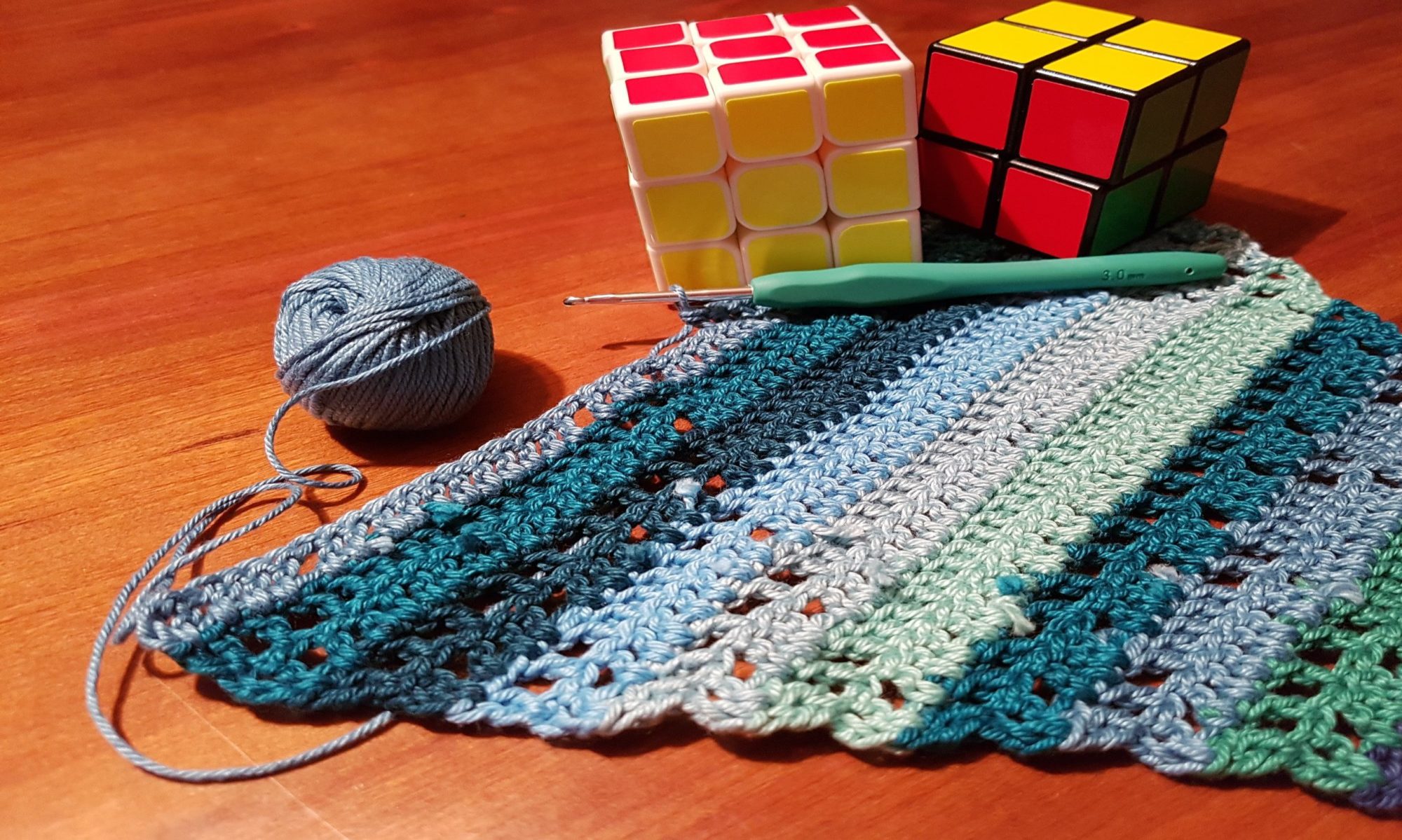an origami box that can be resized
One of my favourite origami collaborations with Fran Watson last term was our Christmas Decorations webinar that we put on in December. Between us we demonstrated how to make hanging decorations, stars and a little box to put presents or treats in. The folding pattern that Fran showed in the webinar was one that I had learned many years before from a book but had forgotten about until Fran re-introduced it to me. Here are some online instructions.
The nice thing about this box is that by adjusting the folding pattern very slightly, you can make a box with a slightly larger footprint that can be used as a lid, or you can adjust the model and fold by thirds instead of quarters to get a much taller cubic box. I decided to use my mathematical skills to calculate the paper size needed to make a box with a lid to wrap a Christmas robin that I crocheted for a family member’s Christmas present. As the robin was about as tall as he was long, the cubic box seemed the most appropriate, but I wasn’t sure how big a square I needed to start with, so I folded a box from a 15cm square (which I knew would be too small), and measured the dimensions of the completed box. Then I could scale it up and cut a square of wrapping paper which would definitely fit my robin.
For the lid, I wanted to make a normal box rather than the cubic box, as I wanted the lid to be much shorter than the box, but slightly larger in cross section than my cube. Again, I worked out the relative sizes of the paper and the completed box, and used this to work backwards and calculate the paper size I needed to begin with. I cut the appropriate square from the same wrapping paper, and my robin’s home was finished.

When thinking about how I want mathematics classrooms to be set up, one of my goals is to make sure that children leave school with the confidence to be able to handle questions of scaling, ratio and proportion like my robin box problem. So many people would be anxious to attempt the mathematics I needed to do, or would lack the confidence to try. This is another good reason to include origami or other hands-on construction in mathematics lessons. Setting a challenge like my robin problem gives children opportunities to experiment, conjecture, explain their reasoning to others, make mistakes, revisit their thinking and finally experience success, in a way that a dry and dusty textbook exercise of abstract ratio questions might not.
